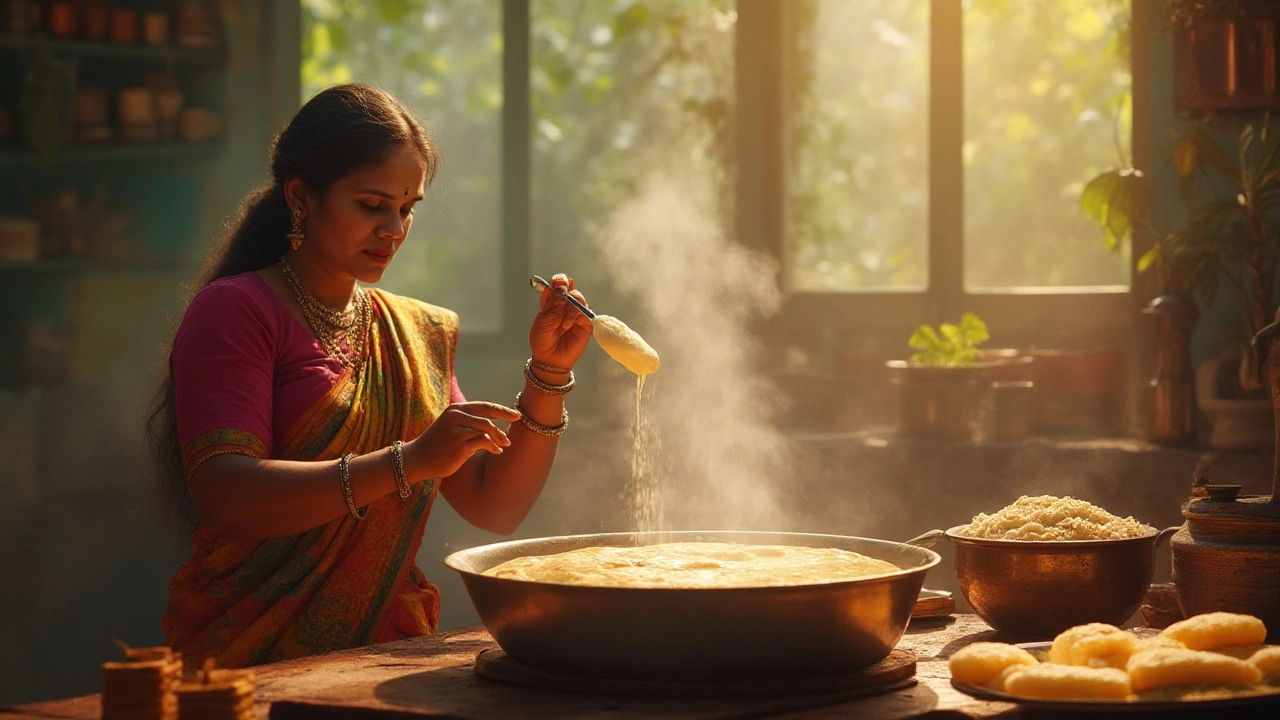Dosa Recipe Secrets: Unlock Fluffy, Crispy Classics
When working with Dosa, a thin, fermented crepe made from rice and lentils that’s a staple of South Indian cuisine. Also known as Indian pancake, it serves as breakfast, snack, or dinner base. Understanding the science behind its batter, the role of leavening agents, and regional twists can turn a good dosa into a restaurant‑level star. This guide pulls together the most practical dosa recipe secrets you’ll need.
Why Batter Fermentation, the slow souring of rice‑lentil mix, is the heart of a great dosa
Fermentation isn’t just a flavor booster; it builds the light, airy texture that lets the crepe puff at the edges. The process creates natural yeasts and bacteria that break down starches, producing carbon dioxide and a subtle tang. A well‑fermented batter typically sits 8‑12 hours at room temperature, but if you’re in a rush, a few tricks—adding a pinch of instant yeast or warming the mixture slightly—can speed things up without sacrificing taste. Remember, temperature matters: a warm kitchen (around 30 °C) accelerates microbes, while a cold spot stalls them.
Another common question is whether you can skip soaking the rice and lentils. Soaking for 4‑6 hours softens the grains, reduces grinding time, and improves fermentation because the grains start to release enzymes earlier. Skipping this step may lead to a denser batter that ferments unevenly, resulting in flat dosas that lack the signature crispness.
Now that you’ve got a soupy, slightly sour batter, the next move is to fine‑tune its lift.
Enter Baking Soda, a chemical leavener that adds extra carbon dioxide when the batter hits high heat. A tiny pinch (about ¼ tsp per 2 cups of batter) is all you need to boost puffiness without turning the dosa bitter. Too much soda can create a metallic taste and cause the batter to collapse quickly. The trick is to sprinkle it just before you pour the batter onto a hot pan, letting the heat activate it instantly.
While we’re talking leaveners, some cooks prefer using beaten rice (poha) or fenugreek seeds for a softer crumb. These ingredients contribute both flavor and a natural rise, but they also alter the batter’s hydration needs, so you’ll have to adjust water accordingly.
All of these elements—fermentation, soaking, and leavening—live under the umbrella of South Indian Cooking, the culinary tradition of the southern Indian states that relies heavily on rice, lentils, and aromatic spices. Dosa is just one entry point, but mastering its secrets opens doors to related dishes like idli, uttapam, and appam. Each shares a common batter base but diverges in thickness, cooking method, and topping choices.
Practical tip: when you spread the batter, aim for a thin, even layer. Too thick and the center stays soggy; too thin and you lose the chew. A quick wrist flick can help spread the batter in a circular motion, creating the classic lacy edges that signal a perfectly cooked dosa.
Temperature control is another hidden factor. A medium‑high heat (around 180 °C) gives a crisp exterior while keeping the interior soft. If the pan is too hot, the batter will brown before it spreads, resulting in a hard, rubbery sheet. If it’s too cool, you’ll get a pale, soggy dosa that never lifts.
Now that you’ve absorbed the key concepts—fermentation, soaking, baking soda, and heat management—your kitchen is ready for experimentation. Want a spicy twist? Add a handful of chopped green chilies or mustard seeds to the batter before cooking. Prefer a cheesy finish? Sprinkle grated paneer right after the dosa hits the pan; the heat will melt it instantly.
Below, you’ll find a curated collection of articles that dive deeper into each of these aspects. From quick fermentation hacks to the exact baking soda dosage for the fluffiest crepe, the posts cover beginner‑friendly guides and advanced tricks alike. Browse through, pick the tip that matches your skill level, and start whipping up dosas that rival the ones you love at street stalls.

Why Do We Add Curd to Dosa Batter? Science, Tips, and Real Flavor
Ever wondered why curd goes into dosa batter? Hauntingly simple, the answer packs a punch. Get the science, tips, and real flavor secrets of dosa here.